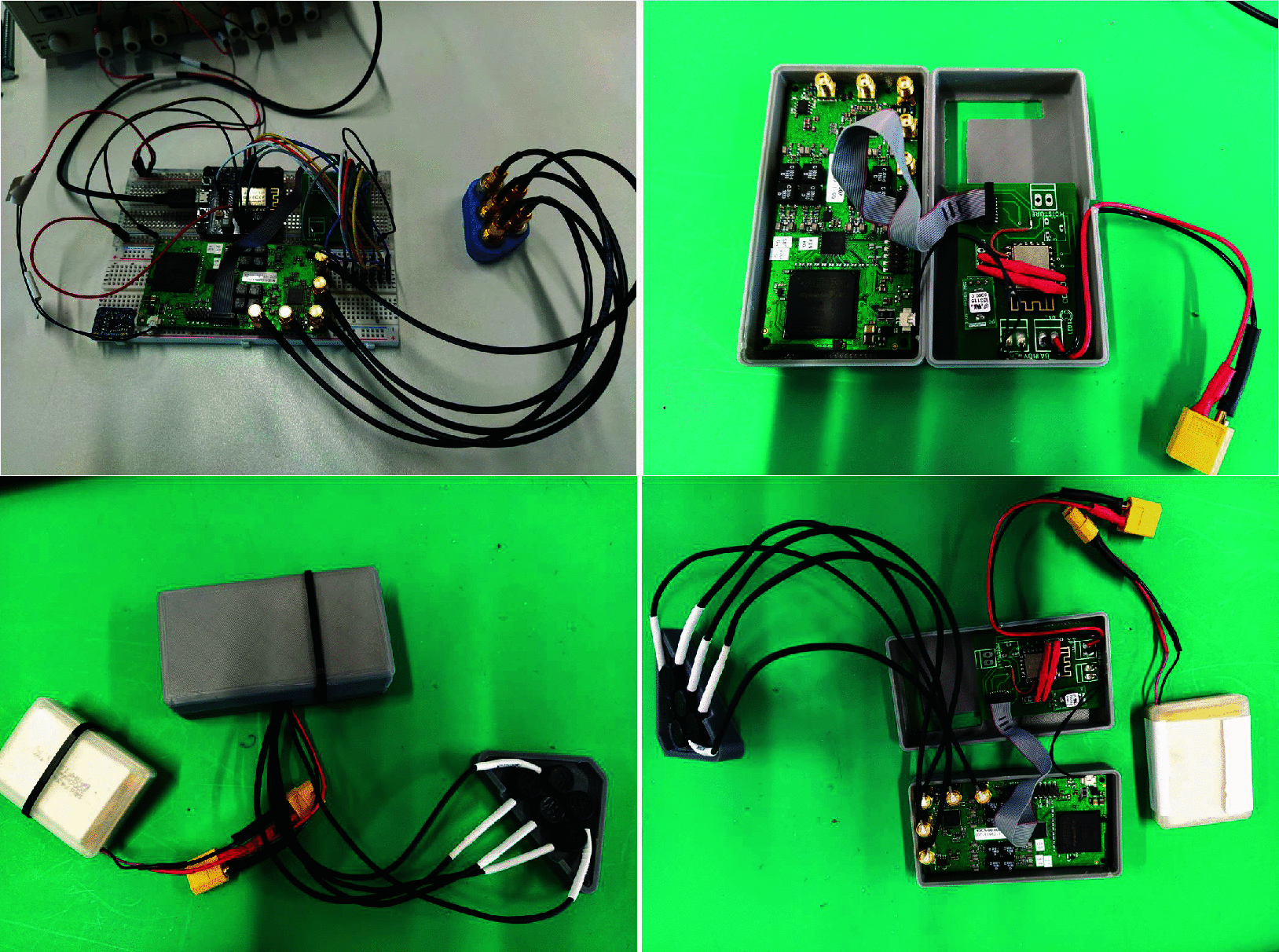Treatment of Nocturnal Enuresis Using Miniaturised Smart Mechatronics With Artificial Intelligence
- PMID: 38088989
- PMCID: PMC10712671
- DOI: 10.1109/JTEHM.2023.3336889
Treatment of Nocturnal Enuresis Using Miniaturised Smart Mechatronics With Artificial Intelligence
Abstract
Our study was designed to develop a customisable, wearable, and comfortable medical device - the text so-called "MyPAD" that monitors the fullness of the bladder, triggering an alarm indicating the need to void, in order to prevent badwetting - i.e., treating Nocturnal Enuresis (NE) at the text pre-void stage using miniaturised mechatronics with Artificial Intelligence (AI). The developed features include: multiple bespoke ultrasound (US) probes for sensing, a bespoke electronic device housing custom US electronics for signal processing, a bedside alarm box for processing the echoed pulses and generating alarms, and a phantom to mimic the human body. The validation of the system is conducted on the text tissue-mimicking phantom and volunteers using Bidirectional Long Short-Term Memory Recurrent Neural Networks (Bi-LSTM-RNN) and Reinforcement Learning (RL). A Se value of 99% and a Sp value of 99.5% with an overall accuracy rate of 99.3% are observed. The obtained results demonstrate successful empirical evidence for the viability of the device, both in monitoring bladder expansion to determine voiding need and in reinforcing the continuous learning and customisation of the device for bladder control through consecutive uses. Clinical impact: MyPAD will treat the NE better and efficiently against other techniques currently used (e.g., post-void alarms) and will i) replace those techniques quickly considering sufferers' condition while being treated by other approaches, and ii) enable children to gain control of incontinence over time and consistently have dry nights. Category: Early/Pre-Clinical Research.
Keywords: Nocturnal enuresis; incontinence; long short-term memory recurrent neural networks (LSTM-RNN); reinforcement learning (RL); wearable medical devices.
© 2023 The Authors.
Figures












References
-
- Mowrer O. and Mowrer W., “Enuresis: A methods for its study and treatment,” Amer. J. Orthopsychiatry, vol. 2, no. 4, pp. 259–267, 2005.
-
- Hägglöf B., Andren O., Bergström E., Marklund L., and Wendelius M., “Self-esteem in children with nocturnal enuresis and urinary incontinence: Improvement of self-esteem after treatment,” Eur. Urol., vol. 33, no. 3, pp. 16–19, 1998. - PubMed

